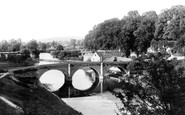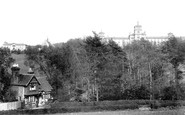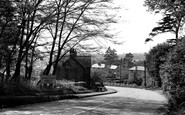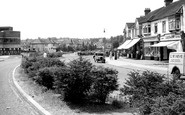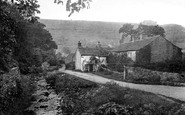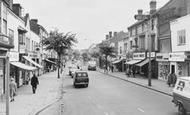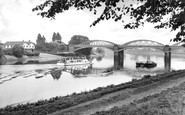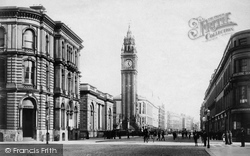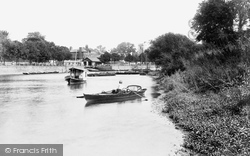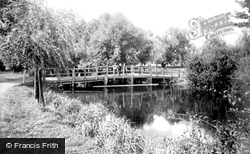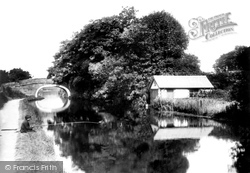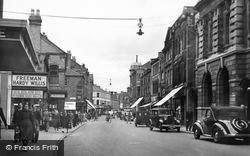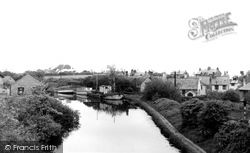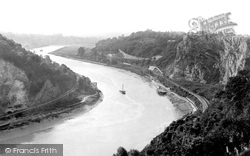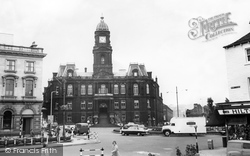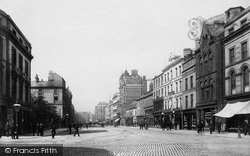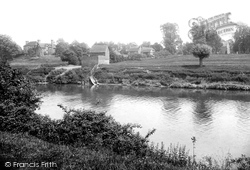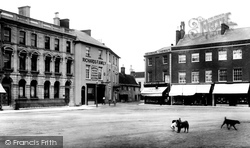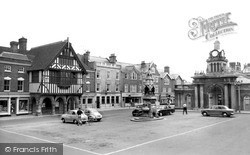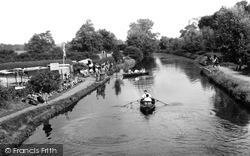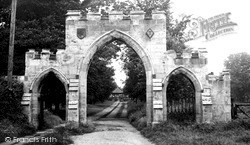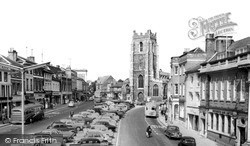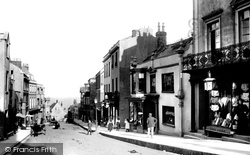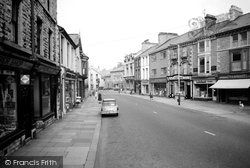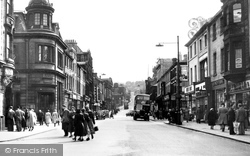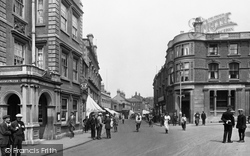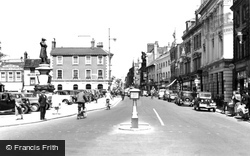Places
3 places found.
Those places high-lighted have photos. All locations may have maps, books and memories.
Photos
68 photos found. Showing results 441 to 68.
Maps
12 maps found.
Books
15 books found. Showing results 529 to 15.
Memories
7,562 memories found. Showing results 221 to 230.
Dinham Weir
The Ludlow weirs were navigation Flash Lock weirs until the railways came to the Teme valley. Sailing Trows from the Severn worked up the river with wheat for the mills from Gloucester returning with flour for the villages and iron bar ...Read more
A memory of Ludlow in 1860 by
My Three Years At Reedham
I recall walking past the gate-house with my mother on a Tuesday afternoon in March 1950. I was to start my lustrous career there for a period of three years, leaving in March 1953. Starting there was an real shock to the ...Read more
A memory of Purley in 1950 by
Easneye Children's Home
I have a sketchy memory of my childhood in Easneye, between the ages of around 3-5 years old. I remember my mother dropping me off and being terrified. She said I was having a holiday but never came back for me. ...Read more
A memory of Stanstead Abbotts in 1962 by
Early Recollections
Amongst my earliest memories of Burnham-on-Sea are those of being in the forge of my grandfather's blacksmith's shop, he was Mr Welland, watching him shoeing horses. After the work was done he would hoist me up onto the ...Read more
A memory of Burnham-on-Sea in 1940 by
Coney Hall 1950/60s
This picture brings back many memories. I was born in 1953 and lived in Coney Hall until 1972, attending school at Wickham Common and then Hawes Down Secondary. The view from where this picture was taken is not dramatically ...Read more
A memory of West Wickham by
Waltham Abbey The Place I Call Home
I was born in Waltham Abbey and lived there until I was twenty eight. It is the place I call home, where my roots are. Many times I remember going into the Abbey Church; there is such a feeling of ...Read more
A memory of Waltham Abbey in 1962 by
Cragg Farm
This photo shows Cragg Farm painted white and Sweetbriar Cottage attached. My mother was Margaret Jane Carr and was born and raised at Cragg Farm. She was 16 years old in 1926 when this photo was taken. She married Roland Calverley ...Read more
A memory of Starbotton by
Saxby Street
Does anyone remember Harry Wright's Coalyard. We lived immediately opposite at No. 54, on the corner of Pomfret Street. I came home early from school one day and realised I didn't have a key, so thought nothing of asking ...Read more
A memory of Irlams o' th' Height by
Coming Back Home
I came back to brierley bonk in 1966, complete with surfboard, after leaving BH in 1961 ,with my parents for Australia, to start a new life ?,well when i got back the place haden't really changed, Except me.I had left behind ...Read more
A memory of Brierley Hill in 1966 by
The Howard Family Of Barnes And Hammersmith
My Great-Great-Grandad, Henry Howard, lived in the early 1800’s - a time of great rural depression - and so he left his Devon home to look for work in London with the result that several generations of my ...Read more
A memory of Barnes in 1870 by
Captions
2,501 captions found. Showing results 529 to 552.
The most striking change between this view and the 1903 view in image 49238 is the splendidly ornate bank building which replaced the two buildings beyond Patterson's.
Here we see another view of the street, which was cut in early Victorian times to become a channel of trade and industry. The vista extends to Cromac.
The local population in the Middle Ages made a living from agriculture, fishing, boat-building, and ferrying traffic up and down the river.
Warrington's Town Hall was originally Bank Hall, built between 1749-50 by the world-famous architect James Gibbs as a home for a local businessman, Thomas Patten.
Further east along The Embankment, Newnham Bridge crosses the north branch of the River Ouse at the south end of Tennyson Road. We are looking east from the north bank.
Note the boathouse on the far bank. I wonder if these people were charged every time they used the canal, or if they paid a one-off or annual fee.
A smart two-seater convertible is parked outside the imposing Barclays Bank, which had been built in 1910 as the Boston & Spalding Bank.
Hest Bank was the seaward side of the village, right at the southern side of the mouth of the River Kent. At one time, the area was referred to as Slyne with Hest.
Removal of the ivy enables us to admire the late 18th-century house (with a painter in action, left) and next door, a Georgian façade conceals a timber-framed house dated to 1454-55.
On the left bank is the single track Bristol & Portishead Pier & Railway, which opened as a broad gauge line in April 1867 and was worked by the Bristol & Exeter Railway.
Three years in the building, the Town Hall opened on 17 April 1889, and this day was proclaimed a public holiday in the town. The Italianate style reflected the prosperity of this weaving community.
The broad thoroughfare reflects not only the market town but also its link with the sea. Below the cobbles still runs the Belfast River, which once had quays allowing ships to come off the Lagan.
Today there are moorings along the river bank, and housing development has completely swamped the old village.
The Square looks remarkably spacious before motor vehicles arrive to displace the free-roaming dogs.
The Market Square is still the commercial centre of the town. There are several banks, and the market is held here on Tuesdays and Saturdays.
The River Stort, with the Town Park along its banks, has become a beautiful and popular venue for the people of Harlow, Old and New.
Archdeacon Stonehouse built this imposing gateway leading up to the lychgate of St Martin's parish church in the 1840s.
The shops around the market are becoming dominated by national chains. On the left, for example, are Boots, Foster Brothers and Freeman, Hardy & Willis.
The shop window at No 26, the draper Henry Octavius Bickley (right), contains clothing and parasols.
The District Bank, in the distance on the right by the pedestrian crossing, North West Electricity, next to J T Gilchrist chemist, and Lakeland Cleaners.
On the right, just above the Trustee Savings Bank, is the New Day furniture store; the building is now occupied by the 'Burnley Express'.
The Royal Hotel (left) vied with the George in attracting a superior local clientele. Next door, the drapers, Pritchard's, has a sun awning to prevent the window display fading.
The most notorious abbot of Furness Abbey was undoubtedly Alexander Banks. One William Case, on behalf of the people of Sellergarth, sued him in court in 1516.
The statue of John Howard, the founder of the Howard Leagyue for Penal Reform, broods over the Sqaure - and perhaps over the irony of its location - close to the old Town Gaol that allegedly once held
Places (3)
Photos (68)
Memories (7562)
Books (15)
Maps (12)

